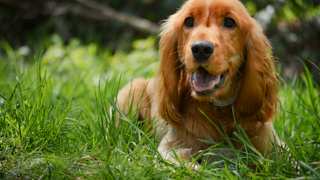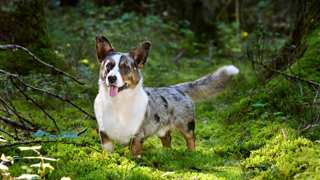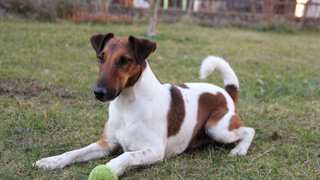Rat Terriers are active little dogs, so they love to eat--and their diet will need to be balanced and complete to keep them healthy. Like all breeds, Rat Terrier food will need to contain plenty of animal proteins and carbohydrates for energy, vitamins and minerals for digestive and immune health, and omega fatty acids for coat and skin wellness. This means the most sensible food choice for these dogs is the premium dry kind, as it has balanced portions of the above-listed nutrients--ingredients your Ratter will require to maintain its health in the long term. Cheap, generic food is not recommended for these dogs, because it contains mostly empty "filler" ingredients that simply won't keep the dog healthy, and will even shorten its lifespan.
Blue Buffalo, Royal Canin, and Taste of the Wild are three recommended brands that carry excellent lines of premium dry food.
Because this breed can have some variation in size, recommended daily food portions for individual Ratters can vary as well. On average, though, an adult Rat Terrier will need about 1¼ cups of premium dry food per day, divided into two meals. (The amount may also vary depending on age and activity level.) Rat Terrier puppies, again depending on age, will need a bit less: about ¾ cup per day, divided into three meals (not two) until six months old. For further details on feeding your Ratter from puppyhood through maturity, refer to this Rat Terrier feeding chart:
Rat Terrier Feeding ChartDog AgeDog WeightFood TypeAmountFrequency2 Months3 lbsDry (Puppy formula)0.1 cups3x/day3 Months5 lbsDry0.2 cups3x/day6 Months11 lbsDry0.3 cups3x/day8 Months15 lbsDry* (Puppy/Adult)0.5 cups2x/day10 Months+17 lbsDry (Adult formula)0.6 cups2x/day*--Around this time, transition to adult food by first mixing in a bit of adult formula with the puppy formula. Over the course of a week, with each meal add a little more adult food to the mixture, until the dog is eating it entirely.
If possible, try and stick to the above-listed portions. Rat Terriers have a fairly high tendency for obesity, and will quickly become overweight if constantly overfed (and under-exercised)--and a fat Rat Terrier will have joint, breathing, and digestive issues, not to mention a shortened lifespan. You can help control your Ratter's weight by having consistent feeding and exercise schedules, by not feeding the dog table scraps, and by not leaving food in the dog's bowl all the time, thereby allowing it to eat anytime it wants. It's better to put your Ratter's bowl down only at mealtimes, then pick it up a few minutes after the dog begins eating.
If you're worried your Rat Terrier is overweight, give the dog this simple test: run a hand along its side, and if you can't feel any ribs, it's diet time. Reduce your Ratter's daily food consumption by one-fourth, and add an extra walk or play period to its daily exercise schedule.






